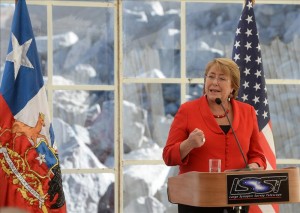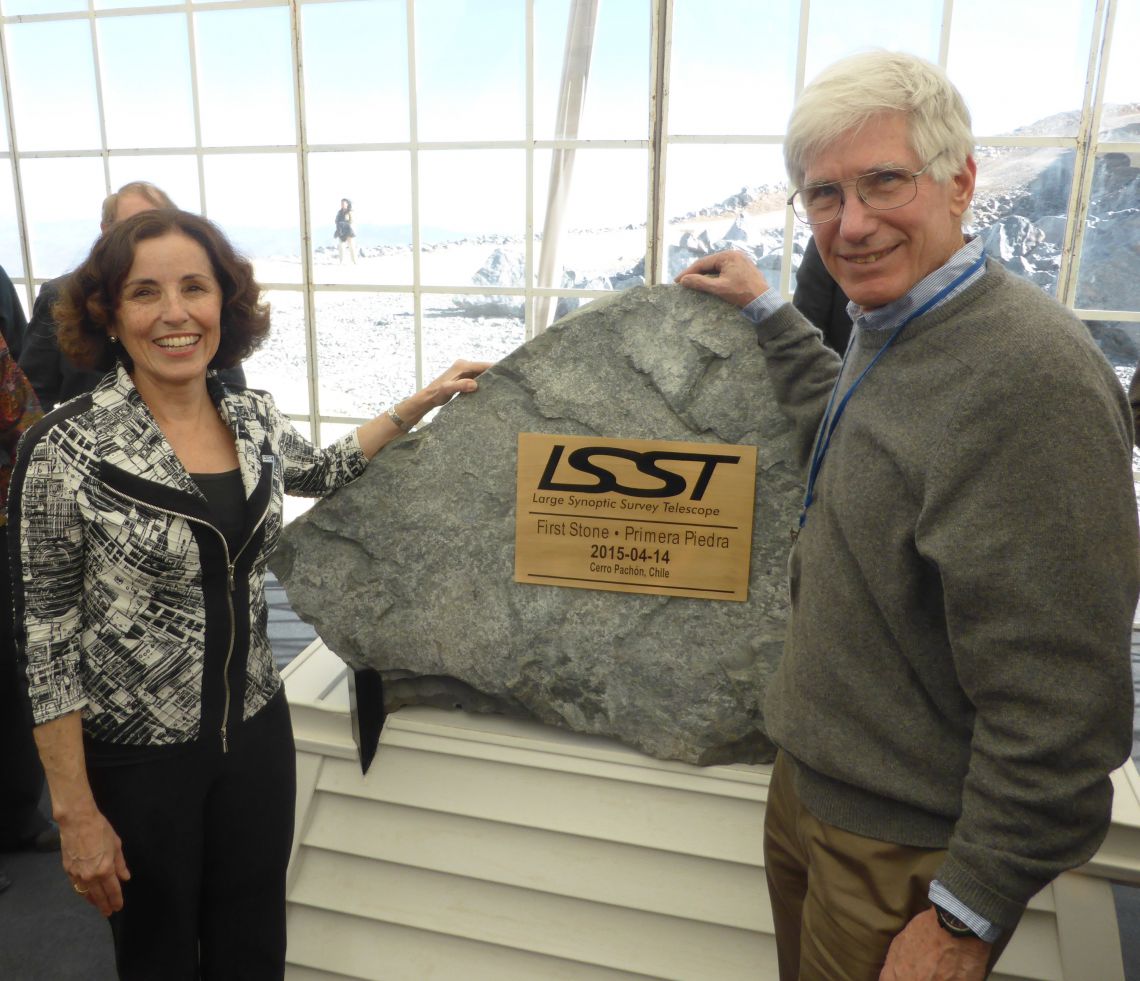First stone laid for Large Synoptic Survey Telescope (LSST)
A new map of the heavens took a big step forward last week as scientists and dignitaries, including Chilean President Michelle Bachelet, laid the first stone for the Large Synoptic Survey Telescope on the 8900-foot summit of Cerro Pachón in northern Chile.

Michelle Bachelet, President of Chile, speaking at the first stone ceremony for the LSST. NSF photo
Among those present was UC Davis physicist J. Anthony (Tony) Tyson, who originally conceived the LSST system (which includes a giant camera, novel telescope design and supercomputer) and lead the project from the 1990s to 2013. He now serves as Chief Scientist for the telescope.
The LSST will look wide and deep, completing a scan of the entire southern sky every three days for 10 years. It will produce a motion picture of the heavens, capturing fast-moving or changing objects, such as asteroids, comets, supernovae and gamma-ray bursts. By measuring the distortion of light, it will produce the most comprehensive map yet of the "dark matter†which makes up about a quarter of the universe, and its accurate measurements will allow astronomers to test their theories about "dark energy†which makes up much of the rest.

NSF director France Cordova and UC Davis physicist Tony Tyson at the first stone ceremony for the
The telescope is funded by private donations and the National Science Foundation. Prominent private supporters including Bill Gates, Charles Simonyi and Wayne Rosing.
The telescope is expected to achieve first light in 2019 and full operations in 2022.
More information
Video:Tyson talks about the LSST and the new universe
some nex text here
Published: April 20, 2015, 10:54 am
